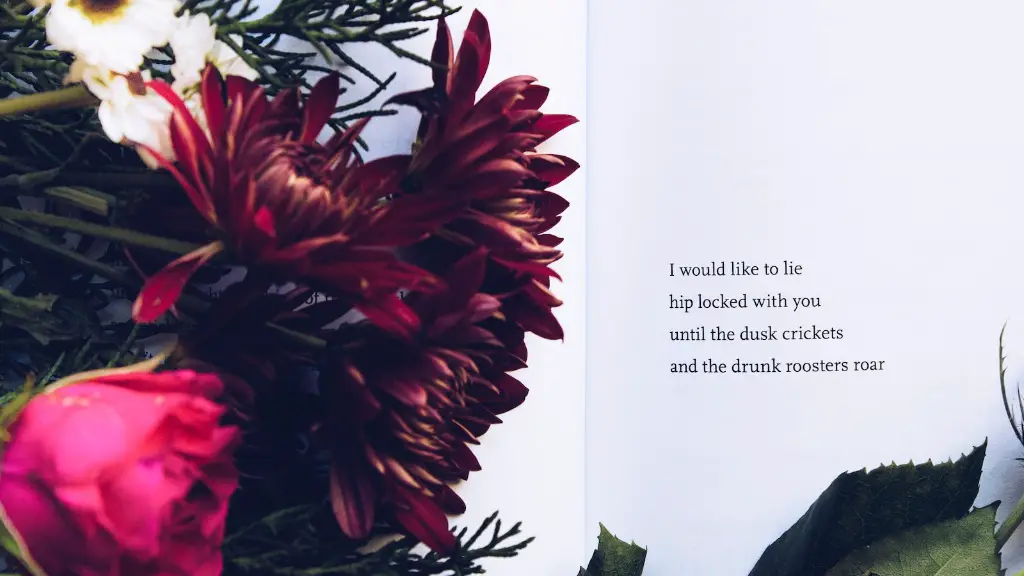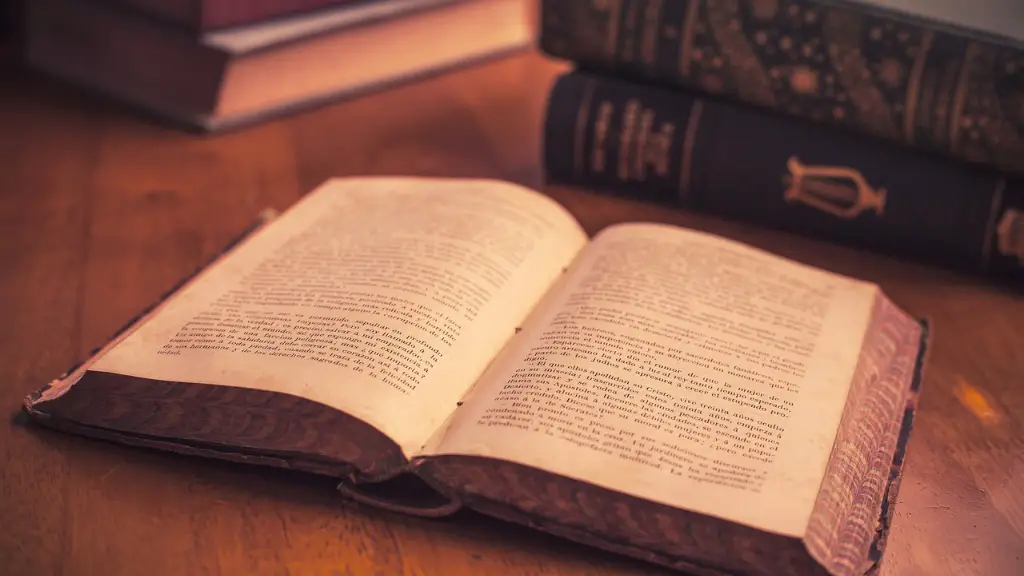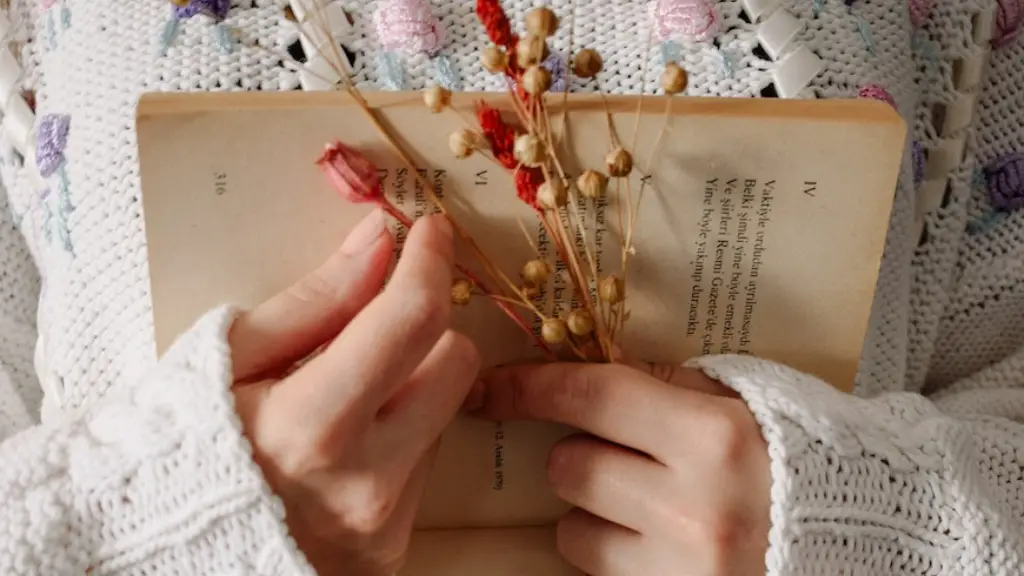What is the importance of poetry in literature?
Poetry is an integral part of literature, with a rich and expansive history. Poetry has been used to express emotion and thought since the dawn of human civilization. In human language, poetic forms take the form of metaphors, similes, and analogies to capture and convey meaning. The impact of poetry reaches far beyond the individual poem, as it has been used to disseminate beliefs, educate, and inspire for centuries.
Poetry is not limited to only written words, however. It has been used in art, music, and other forms of expression. This is because poetry is a form of communication, and it allows for an individual to convey deep and complex messages with few words. Studies have found that poetry has the power to evoke emotions and aid understanding, allowing readers to better comprehend the subject matter.
Poetry is also used as a tool of protest. Throughout history, it has been used to express dissent and resistance to authority. Poetry can be used to challenge the status quo and offer alternative perspectives on social and political issues. This can be seen in the work of some of the world’s greatest poets, such as William Wordsworth or John Keats.
Poetry also has many educational benefits. Studies have shown that learning and performing poetry improves reading skills and vocabulary development, allowing students to better express their thoughts and ideas. Furthermore, poets are often able to push the boundaries of language and explore its potential, helping readers to not only understand language but to appreciate its beauty.
In addition to its educational value, poetry often serves as the language of love. By conveying feelings of love and emotion, poetry can help enrich relationships. Poetry has been used to express love, desire, and longing, as well as to comfort during times of sorrow and pain. It has also been used to celebrate life and to pay tribute to those who have passed on.
The importance of poetry in literature is undisputed. It has served as a vehicle to communicate ideas, express emotions, and protest the status quo. It has also provided educational benefits and been used to express love and devotion. Poetry is a gift that has been passed on from one generation to the next, and it continues to play an important role in our lives.
The Role of Metaphors
Metaphors are a powerful tool used by poets to create vibrant descriptions and articulate ideas. A metaphor is a type of figurative language that compares two or more things by referring to them in similar terms, and it allows readers to improve their understanding of a concept. For example, in William Wordsworth’s poem “The World Is Too Much with Us,” he uses metaphors such as “we are out of tune” and “foul whisperings” to describe the disconnection and deterioration of human beings in a world that is driven by modernity.
Metaphors can also provide insight into deeply personal experiences and relationships. In Maya Angelou’s poem “Still I Rise,” she uses the metaphor of a caged bird to describe her struggles with racism and oppression. By conveying her feelings through the metaphor of a caged bird longing for freedom, Angelou gives readers a unique and powerful insight into her experience.
Metaphors, therefore, play an important role in allowing poets to express their ideas. By using vivid language and comparisons, poets are able to convey complex concepts in a way that is both easy to understand and emotionally powerful.
Significance of Rhyme and Rhythm
Poets often use rhyme and rhythm to convey their message or tell a story. Rhymes help to add structure and logic to a poem, allowing ideas to flow more naturally. Rhyme and rhythm also appeal to the ears and have the power to evoke feelings in readers. Furthermore, rhythmic poems have the added benefit of being easy to memorize, and thus they are often used in educational settings. For example, nursery rhymes are commonly used in schools to help children learn language, sounds, and grammar.
In addition to its pedagogical applications, rhyme and rhythm can be used to construct powerful imagery. By creating a rhythmic flow, poets can articulate ideas and feelings more effectively. For example, in Percy Bysshe Shelley’s poem “Ozymandias,” he uses the rhyming pattern of an abab cdcd ee to create a vivid image of a crumbling and forgotten statue in the desert.
Rhyme and rhythm, therefore, are essential components of poetry, and they are often used to create vivid and powerful images. By using a rhythmic flow, poets are able to articulate complex concepts and evoke emotions in readers.
The Use of Symbolism
Symbols are objects, words, or images that are used to represent an idea. Poets often use symbolism to convey subtle messages or more complex ideas. For example, in Alfred Lord Tennyson’s poem “Ulysses,” he uses the image of an eagle to represent Ulysses’s longing for adventure. The eagle symbolizes Ulysses’s desire to experience life to its fullest, and it gives readers a better understanding of his character.
Symbols can also be used to create vivid images and enhance the emotional impact of a poem. In Rainer Maria Rilke’s poem “Archaic Torso of Apollo,” he uses the famous ancient Greek sculpture of Apollo as a symbol of beauty and perfection. The poem is populated by vivid imagery, and the use of the symbol of Apollo gives readers a tangible image of beauty that helps convey the philosophical message of the poem.
Symbols, therefore, can be used by poets to express their feelings and ideas in creative ways. By using symbols, poets are able to convey their message in a more powerful and effective manner.
The Contribution of Imagery
Imagery is the use of vivid language and detailed descriptions to convey a message or create an atmosphere. Poets often use imagery to create a physical image for readers and enhance the emotional impact of their work. For example, in Sylvia Plath’s poem “Daddy,” she uses vivid imagery to evoke the feeling of anger and despair that the poem is about.
Imagery can also be used to convey complex concepts in a way that is both accessible and appealing. In Elizabeth Bishop’s poem “One Art,” she uses the metaphor of a house to represent loss. By constructing her poem in this way, Bishop conveys her message in an accessible and emotionally-impactful manner.
Imagery, therefore, is an essential component of poetry. By using vivid language and comparisons, poets are able to make their work more accessible and emotionally powerful. It is a powerful tool that can be used to convey ideas, evoke emotions, and create vivid images.




